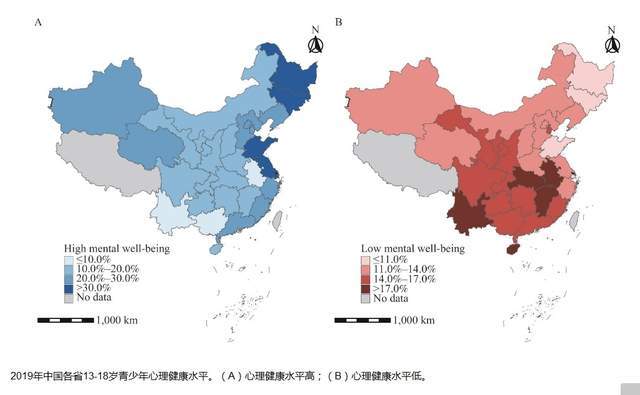Recently, the “Adolescent Mental Health Map” released by the Chinese Center for Disease Control and Prevention once again sounded the alarm on the issue of adolescent mental health. The data shows that among nearly 100,000 respondents aged 13-18, as high as 14.4% of adolescents feel low happiness, a proportion that is concerning. The “National Mental Health Development Report of China (2019-2020)” further reveals a grim reality: among adolescents under 18 in our country, the proportion of depression patients is as high as 30.28%, and with increasing age, the detection rate of depression significantly rises, reaching 40% in high school stages. These series of data not only reflect the prevalence of current adolescent mental health problems but also highlight the urgency and importance of conducting mental stress analysis in secondary school stages.
I. Root Causes and Current Situation of the Issue
Adolescence is a critical stage of psychological development, intertwined with multiple factors such as academic pressure, familial expectations, and social competition. Particularly, the high expectations parents have for their children, especially the excessive pursuit of academic achievements, often surpass the actual capabilities of the children, leading them to bear immense psychological stress. This phenomenon is particularly prominent in regions with intense educational resource competition.
II. Necessity of Mental Stress Analysis
Early Warning and Prevention: Conducting mental stress analysis can timely identify potential psychological problems in students, providing a scientific basis for early interventions. Through regular psychological assessments, schools can establish students’ mental health records, focus on and track students at risk of mental issues, effectively preventing the deterioration of psychological problems.
Optimizing Educational Effects: Mental health education is an essential component of quality education. Mental stress analysis helps schools understand students’ psychological needs, adjust educational strategies, provide more personalized psychological support, thereby optimizing overall educational effects and promoting students’ comprehensive development.
Enhancing Self-awareness: Through mental stress analysis, students can have a clearer understanding of their psychological states, enhancing their self-awareness. This helps them learn self-regulation, actively cope with stress, and cultivate healthy psychological qualities.
Promoting Home-School Collaboration: The results of mental stress analysis can serve as an important bridge for communication between home and school. Schools can provide assessment results to parents, jointly focus on children’s mental health, and create a supportive environment for home-school collaboration.
III. Implementation Strategies and Approaches
Multi-Modal Mental Stress Analysis System: Utilizing integrated comprehensive scales, electroencephalogram analysis, heart rate variability assessment, and other various technological means to conduct comprehensive and systematic psychological evaluations of students. This multi-modal analysis method can more accurately assess students’ stress levels, autonomic nervous system, and peripheral vascular status, providing a basis for developing personalized intervention plans.
Campus Psychological Health Assessment Room: Establishing a campus psychological health assessment room, using the “smart management workstation” to conduct collective initial screenings of students’ mental health status. Through efficient and convenient assessment methods, improving assessment efficiency and coverage, ensuring that every student receives timely psychological attention.
Establishing Psychological Records: Based on periodic mental stress analysis results, establish psychological records at school, grade, class, and individual student levels. These records not only document students’ psychological development but also provide valuable reference data for school psychological counseling and intervention.
In conclusion, conducting mental stress analysis in secondary school stages is an important measure to safeguard adolescent mental health and promote their comprehensive development. Through scientific, systematic psychological assessments, and intervention measures, we can create a healthier, more harmonious growth environment for adolescents.


